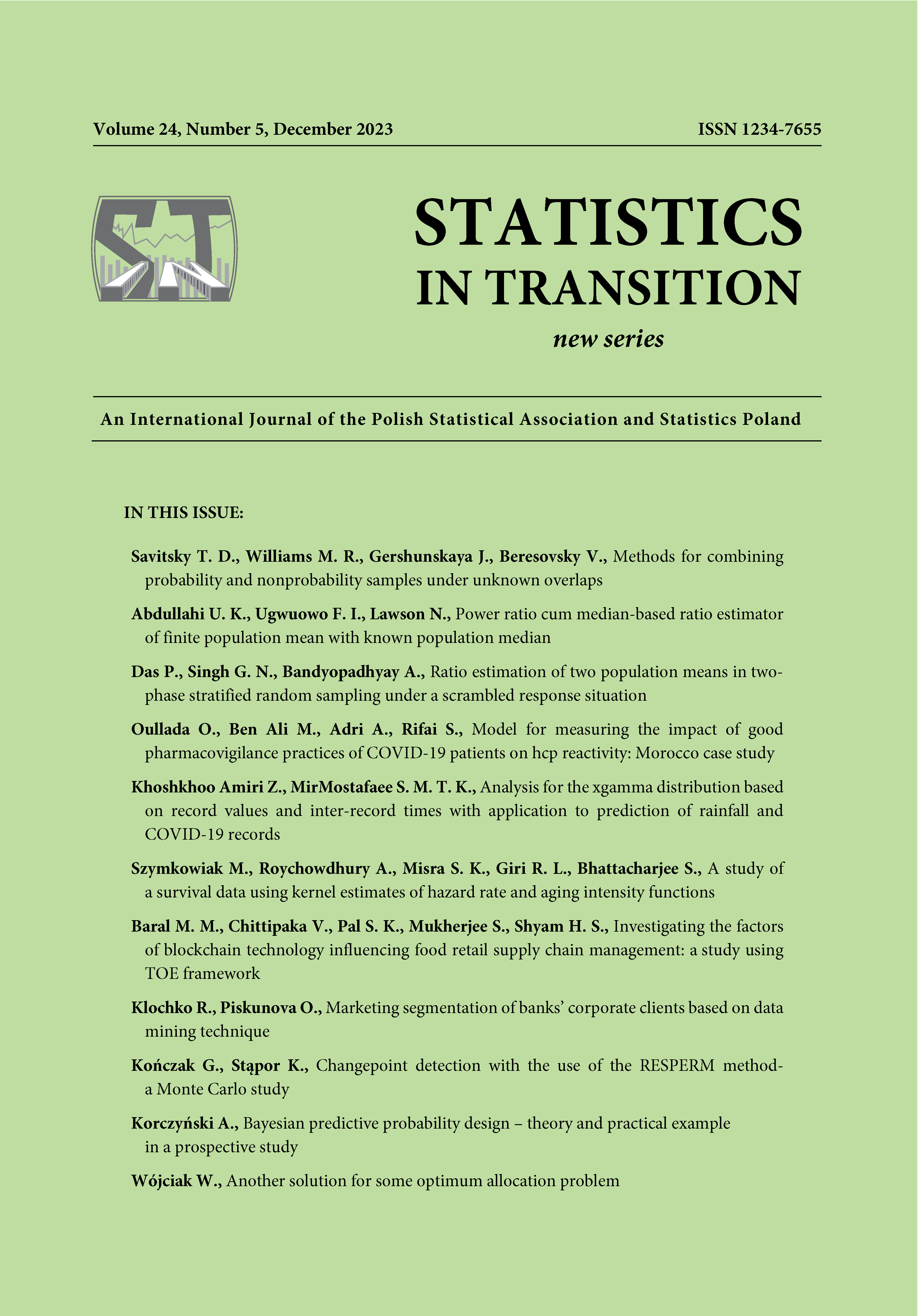ARTICLE
ABSTRACT
RESPERM (residuals permutation-based method) is a single changepoint detection method based on regression residuals permutation, which can be applied to many physiological situations where the regression slope can change suddenly at a given point. This article presents the results of a Monte Carlo study on the properties of the RESPERM method for single changepoint detection in a linear regression model. We compared our method with a well-known segmented method for detection breakpoint in linear models. The Monte Carlo study showed that when the input data are very noisy, the RESPERM method outperforms the segmented approach in terms of variance, and in the case of bias, the results of the two methods are comparable.
KEYWORDS
changepoint detection, RESPERM, permutation methods
REFERENCES
Aminikhanghahi, S., Cook, D. J. (2017). A Survey of Methods for Time Series Changepoint Detection. Knowl Inf Syst., 2017 May, 51(2), pp. 339–367. doi:10.1007/s10115-016-0987-z.
Applied Regression Analysis, (2023). https://online.stat.psu.edu/stat462/node/185/ (24.07.2023).
Bacon, D. W., Watts, D. G., (1971). Estimating the Transition Between Two Intersecting Straight Lines. Biometrika, 58, pp. 525–534.
Chow, G., (1960) Tests of Equality Between Sets of Coefficients in Two Linear Regressions. Econometrica, 28, pp. 591–05.
Cohen, J., (1988). Statistical Power Analysis for the Behavioral Sciences. Lawrence Erlbaum Associates, Publishers, New York.
Davidson, A. C., Hinkley, D. V., (1997). Bootstrap Methods and Their Application. Cambridge University Press, New York.
Julious, S. A., (2001) Inference and Estimation in a Changepoint Regression Problem. The Statistician, 50, pp. 51–61.
Lerman, P. M., (1980). Fitting Segmented Regression Models by Grid Search. Applied Statistics, 29, pp. 77–84.
Muggeo, V. M. R., (2003). Estimating Regression Models with Unknown Break-Points. Statistics in Medicine, 22, pp. 3055–3071.
Muggeo, V. M. R., (2008). Segmented: an R package to fit regression models with broken-line relationships. R News, 8/1, pp. 20–25.
Quandt, R. E., (1958). The Estimation of the Parameters of a Linear Regression System Obeying Two Separate Regimes. Journal of American Statistical Association, 53, pp. 873–880.
Quandt, R. E., (1960). Tests of the Hypotheses that a Linear Regression System Obeys Two Separate Regimes. Journal of American Statistical Association 55, p. 324.
Sheykhfard A., Haghighi F., Nordfiaern T., Soltaninejad M., (2020). Structural equation modelling of potential risk factors for pedestrian accidents in rural and urban roads, International Journal of Injury Control and Safety Promotion, 10.1080/17457300.2020.1835991, 28, 1, pp. 46–57.
Sommer, W., Stapor K., Kończak G., Kotowski K., Fabian P., Ochab J., Bereś A., Ślusarczyk G., (2022). Changepoint Detection in Noisy Data Using a Novel Residuals Permutation-Based Method (RESPERM). Benchmarking and Application to Single Trial ERPs, Brain Sciences, Vol. 12, iss. 5, nr art. 525.
Truong, Ch., Oudre L., Vayatis N., (2020). Selective Review of Offline Changepoint Detection Methods. Signal Processing, Vol. 167, February 2020, 107299.
Ulm, K., (1991). A Statistical Method for Assessing a Threshold in Epidemiological Studies. Statistics in Medicine, 10, pp. 341–349.
